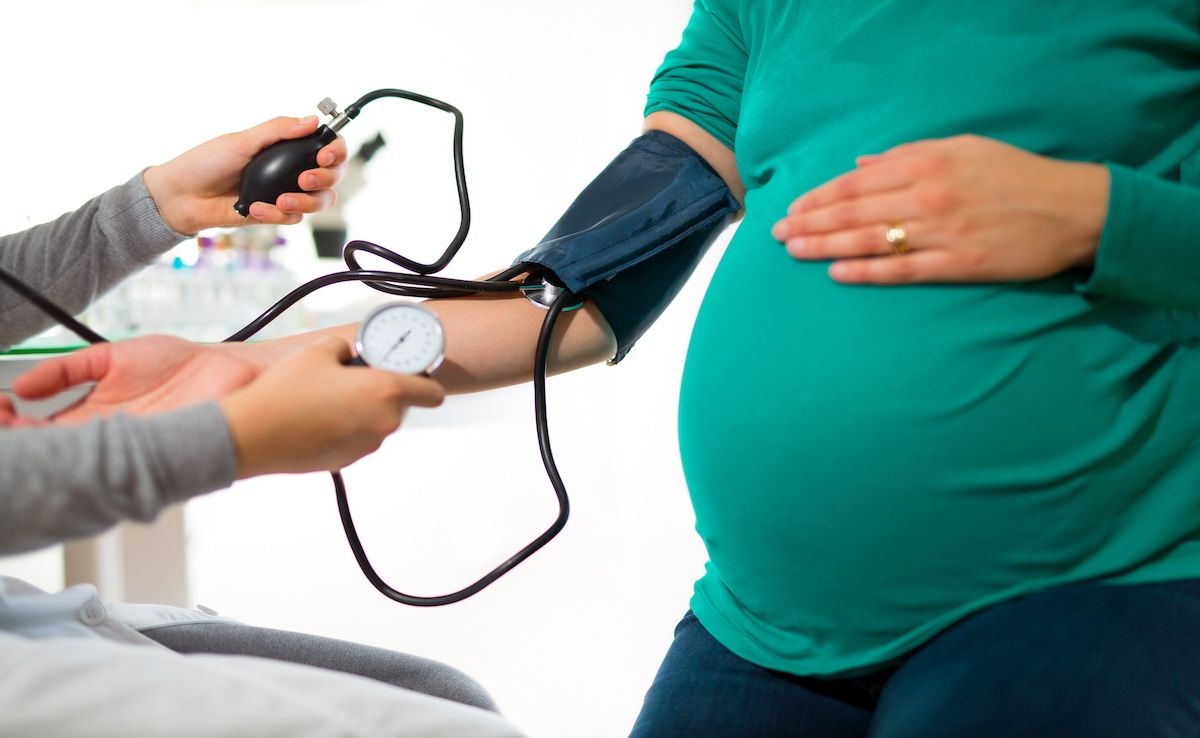- Center on Health Equity & Access
- Clinical
- Health Care Cost
- Health Care Delivery
- Insurance
- Policy
- Technology
- Value-Based Care
Managing Pulmonary Hypertension in Pregnancy
Pulmonary arterial hypertension (PAH) can be a challenging complication to manage during pregnancy; women with PAH who are pregnant are considered a high-risk population, and they face higher rates of maternal and fetal complications.
Close monitoring and individualizing treatment plans should be top priorities for the multidisciplinary teams caring for women who are pregnant or are considering pregnancy and exhibiting signs of pulmonary hypertension, according to new research published in International Journal of Cardiology Congenital Heart Disease.1
This patient population is known to have higher risks of maternal morbidity and mortality, in addition to poor fetal outcomes, and newer data indicate that individual prognosis may be dependent on underlying etiology, such as hemodynamic changes—or alterations in blood flow such as from a cardiovascular condition.2
For this analysis, the investigators used these disease classifications of pulmonary hypertension:
- Group 1: pulmonary vascular resistance (PVR) above 2 WU and a max left ventricle filling pressure of 15 mm Hg
- Group 2: pulmonary capillary wedge pressure (PCWP) above 15 mm Hg, mPAP above 20 mm Hg, and with PVR below 2.0 WU
- Groups 3 and 4: max PCWP of 15 mm Hg and PVR above 2 WU
Pulmonary hypertension typically is diagnosed when someone exhibits a mean pulmonary arterial pressure (mPAP) above 20 mm Hg at rest, but global guidance on risk stratification does not include much information on pregnancy-related outcomes. Also, women with pulmonary arterial hypertension (PAH) are classified as World Health Organization class IV, a group that has the highest risk of complications and an estimated maternal cardiac event rate of 40% to 100%.
In pregnant women, in particular, who have PAH, prominent cardiac complications include cardiac arrest, pulmonary hypertensive crisis, intrauterine growth restriction, and miscarriage. Those with severe or idiopathic PAH are at the highest risk during pregnancy, according to data from the Registry of Pregnancy And Cardiac disease.
Women with pulmonary arterial hypertension who are pregnant or considering pregnancy are considered a high-risk population, and they face increased rates of maternal and fetal complications. | Image Credit: ©Mediteraneo-stock.adobe.com

Priorities Prior to Pregnancy
Among women with heart/cardiovascular disease who have PAH, the study authors recommend having pregnancy—even fertility—discussions soon after a diagnosis, so that safer contraception can be considered, such as that which contains progesterone instead of estrogen. Orally administered estrogen has been implicated in influencing the risk of high blood pressure.3 They also recommend counseling on 2 fronts: to address maternal and fetal risks, such as adjusting any current medications to avoid upping teratogenic-related complications, and to discuss genetic counseling for patients who have hereditary disease.
Priorities During Pregnancy
The authors recommend a full clinical workup with the patient’s multidisciplinary team, and this should encompass a comprehensive risk assessment, discussions on termination for patients facing an especially high risk, and recommendations for future contraception. Careful monitoring for potential anemia, infection, and arrhythmia is also necessary, and the patient’s team should schedule regular evaluations of oxygen saturation and B-type natriuretic peptide, in addition to echocardiographies. Again, teratogenic risk from PAH medications needs to be investigated.
Priorities After Pregnancy
The delivery method should be individualized by patient risk. Cesarean section is safer for women who have severe PAH, and vaginal delivery is appropriate for women who have mild PAH. Delivery in a tertiary care facility is advised in either case. Pain relief is a prominent concern, and for this, fluids should be continuously monitored. When spinal block becomes necessary, hemodynamic changes require constant monitoring. After delivery, the study authors noted again the importance of observing fluid levels, intervening with anticoagulation as needed, and follow-up.
“The outcome of pregnancy for some forms of PH is good while in others, including severe PAH, idiopathic PAH, [and] other forms of PAH, the outcomes are poor,” the authors wrote. “Women considering pregnancy need to be counselled regarding the risks as although these have decreased significantly in the last 2 decades with better monitoring and targeted PAH therapy, pregnancy is still associated with a mortality rate of around 15% to 25% in some forms of PH.”
References
1. Wander G, Montanaro C, Dixit P, Dob D, Johnson MR, Patel RR. Pregnancy and pulmonary artery hypertension: management challenges. Int J Cardiol Congenit Heart Dis. 2025:19:100566. doi:10.1016/j.ijcchd.2025.100566
2. Hemodynamics. Cleveland Clinic. Accessed March 18, 2025. https://my.clevelandclinic.org/health/body/24013-hemodynamics
3. Women taking oral estrogen hormones may have increased risk of high blood pressure. News release. American Heart Association; June 5, 2023. Accessed March 18, 2025. https://newsroom.heart.org/news/women-taking-oral-estrogen-hormones-may-have-increased-risk-of-high-blood-pressure
Infertility Coverage Boosts ART Use and Pregnancy Success: Richard A. Brook, MS, MBA
August 26th 2025In this episode, Richard A. Brook, MS, MBA, discusses his study showing that infertility treatment coverage increases assisted reproductive technology (ART) use and improves pregnancy outcomes.
Listen
Advancing Women's Health: CVS Health Leader on Access, Technology, and Breaking Stigmas
December 5th 2024On this episode of Managed Care Cast, we speak with CVS Health's vice president and chief medical officer for women's health and genomics about advancements and challenges in women's health, focusing on care access, technology, and maternal outcomes.
Listen
